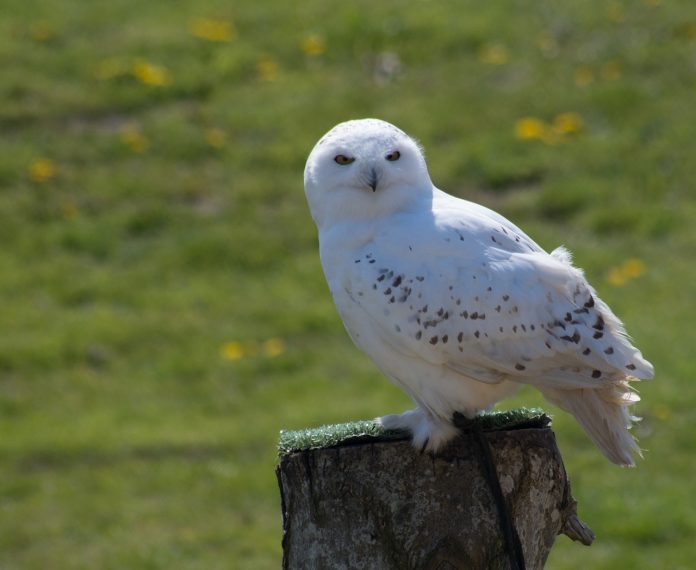A snowy owl is a charismatic bird. Most people have heard of it, and only dream of seeing one. Virtually all birders, however, want to add it to their life list.
Perhaps it’s because they so infrequently push south into the lower 48 states from their natural habitat in the arctic tundra. And at least part of their appeal can be attributed to a snowy owl’s role in Harry Potter books and movies.
Birders love chasing reports of unusual birds. They often jump in their cars, drive hundreds of miles, and hope to spot a “life bird.” It’s part of the thrill of birding. It can take decades to check this species off one’s life list.
I got my one and only snowy owl in Oklahoma in the early 1980s.
Normally snowy owls live on the tundra of northern Canada and Alaska far from most human observers.
When lemming populations are high, females lay as many as 13 eggs. When lemming numbers are low, they lay as few as 3 eggs, or they may forego nesting entirely.
Regardless of nesting success, however, every three to five years at least some wander south, presumably forced out by competition for food.
Nesting success
Snowy owls eat lemmings, voles, and other small rodents, and periodically these small mammal populations crash, especially in years when snowy owl nesting success explodes.
When that happens, many owls, particularly juveniles, wander south to avoid competing with adults for a declining food supply. At these times, they eat a variety of small mammals and birds including waterfowl, coots and gulls.
When rodents are plentiful, owls eat them and their droppings fertilize the barren tundra landscape and stimulate plant growth. But when snowfall is limited, rodents become easy prey and their populations crash.
So perhaps snowy owls themselves help trigger rodent population crashes.
Whatever the cause, snowy owl irruptions into temperate zones delight birders. And this year is shaping up to be a big one for snowy owls, especially within a few hundred miles of the Great Lakes.
Snowy owls are difficult to miss. Because they normally live on the open arctic tundra, they seek similar habitats when they wander south.
Many find abundant rodent populations at beaches, cemeteries, airports, farmlands and even urban parking lots. Often they perch conspicuously on large rocks, fence posts, power line poles and even rooftops.
Snowy owls stand about two feet tall, have a wingspan of more than four feet, and weigh about four pounds. Older males are mostly white; first-year birds are heavily marked with black bars, and adult females show some black barring.
Often during these periodic southward irruptions, many birds are juveniles. This suggests that when food becomes limiting, young birds are the first ones to leave the far north.
To learn if any snowy owls have been seen near you, call a local nature center or wild bird store. Or search online for “snowy owls near ______” and fill in your location.
Keep your distance
If you get lucky and find a snowy owl, keep your distance. Watch from your car; it makes an ideal blind.
Don’t feel you must get closer and closer to get a perfect photograph. You can find hundreds of great snowy owl photos online.
Though often seen during the day, research has shown that snowy owls are primarily nocturnal. When undisturbed, they rarely move much in the daylight.
An owl on the move during the day is usually reacting to watchers and photographers getting too close.
Respect private property. Nothing annoys landowners more than thoughtless birders trespassing on their land.
If you spook a snowy owl and it flies off, you are too close. Remember the first rule of birding: “Do no harm.” These birds are stressed, hungry and have traveled a long distance.
If you get too close and spook them, they may fly across a road and be hit by a car.
To learn more about the snowy owl story, visit www.projectsnowstorm.org.













